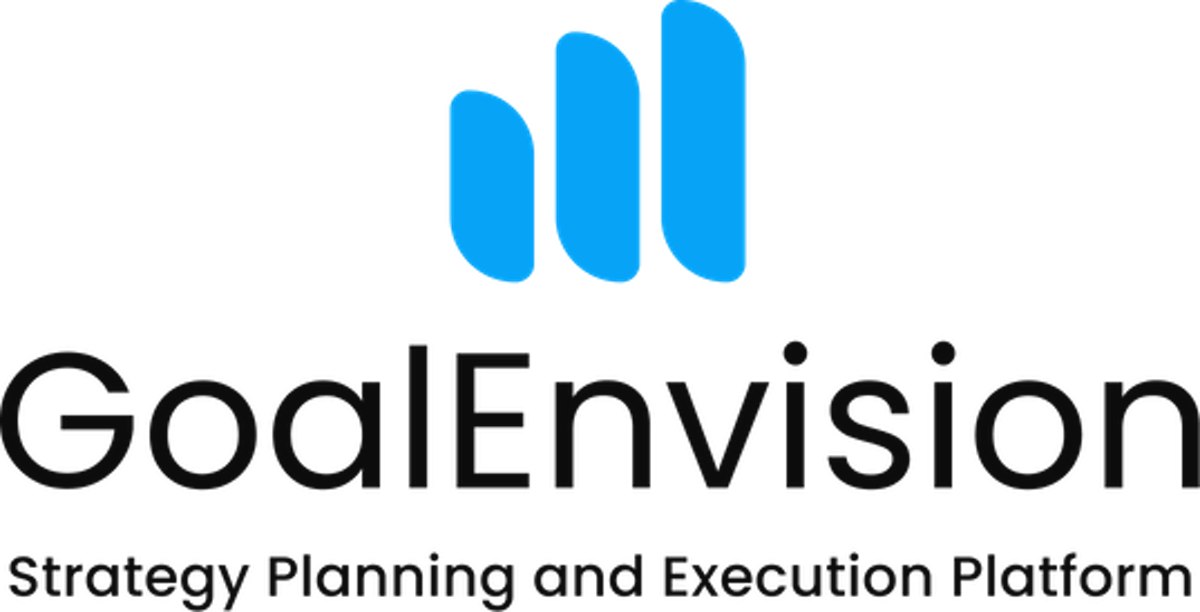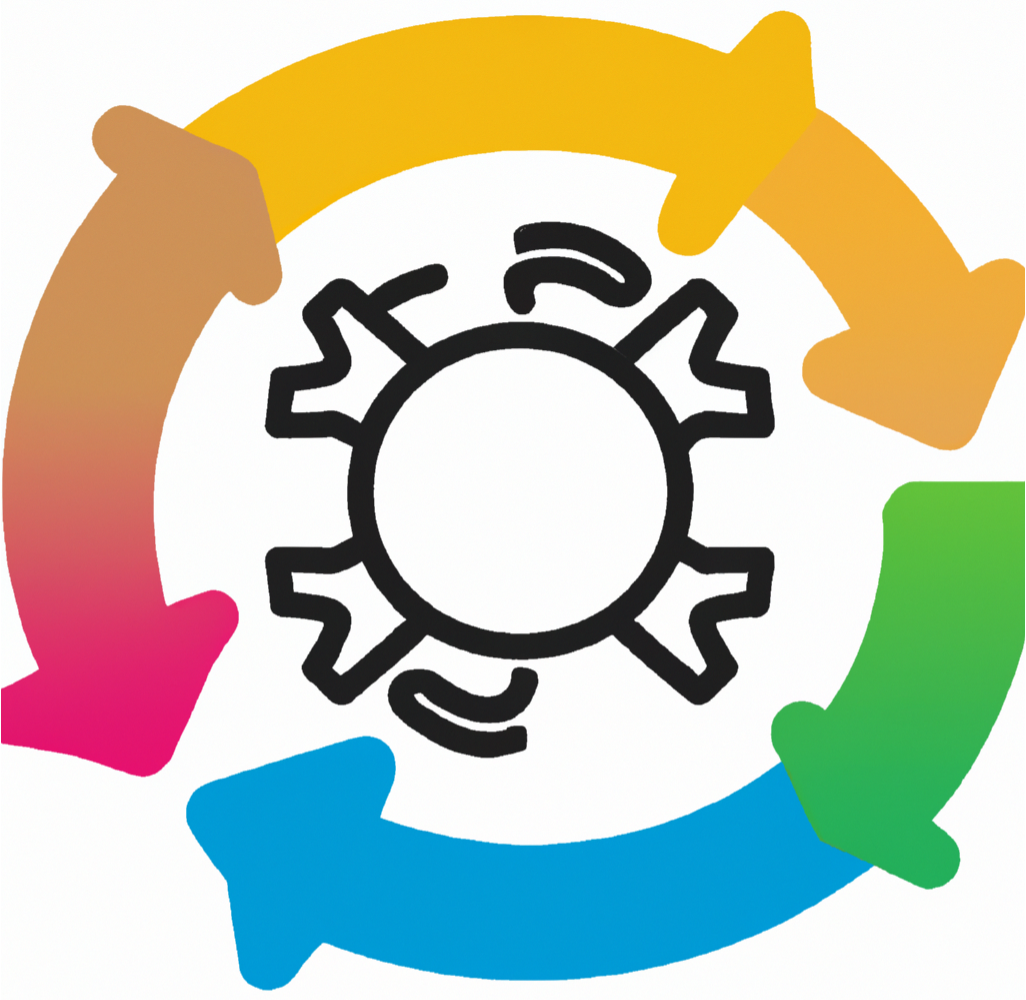A guide to formulating growth targets, strategic goals and conditions.
Share this article
When working with growth targets, strategic goals and conditions in GoalEnvision, it is important to think about how they are formulated. In GoalEnvision, we recommend that all goals and conditions are written as if they have already been achieved or that they describe a desired state in the short term. This creates clarity, increases motivation and makes it easier to communicate the goals in the organisation.
A Clear Guide to Formulating Growth Targets, Strategic Goals, and Conditions in GoalEnvision
Introduction
In GoalEnvision, the formulation of growth targets, strategic goals, and conditions is a crucial part of successful strategic planning. One key principle in GoalEnvision is that all targets, goals, and conditions should be written as if they have already been achieved, or in a short-term perspective. This approach is designed to create clarity, boost motivation, and simplify communication across teams.
This manual will walk you through the best practices for writing compelling and psychologically effective growth targets, strategic goals, and conditions. It will also provide reasoning behind this method and give you examples to guide your own goal-setting process.
Why Formulate Goals and Conditions as if They Are Already Achieved?
When a goal is formulated as though it has already been accomplished, it is easier to visualize and commit to. This method provides a clear and positive outcome, motivating teams to work towards it. Here are a few key benefits:
- Psychological Impact:
- By writing goals in the present or past tense (as if achieved), you create a mindset that the goal is within reach and tangible. This psychological shift can lead to increased motivation and engagement, as people feel more connected to success.
- Simplicity and Clarity:
- Instead of writing goals with confusing metrics like "Increase X by 15%," which require the reader to understand multiple periods and percentages, a simpler goal like "Steady Sales Performance" removes ambiguity. The measurement is still tracked separately, so there's no need to include it in the goal’s name.
- Easier Communication:
- When goals are written clearly and concisely, it’s easier for team members across departments to understand and follow them. There’s no need to decipher timeframes, baselines, or complex figures in the goal name itself.
How to Formulate Growth Targets, Strategic Goals, and Conditions
When setting growth targets, strategic goals, and conditions, follow these three guiding principles:
-
Avoid Numbers and Percentages:
- Never include specific figures, percentages, or dates in the goal name. The measurements for these already exist within GoalEnvision as part of the tracking process. Numbers can confuse or complicate the interpretation of a goal.
-
Write in the Past or Present Tense:
- Formulate the target, goal, or condition as if it has already been achieved or is currently being achieved. This reinforces the mindset of success.
-
Focus on the Desired Outcome:
- Instead of focusing on the process (how much to increase or decrease something), focus on the desired outcome. For example, rather than stating, "Increase sales by 15%," a better goal might be, "Sales performance is strong."
Examples of Formulated Growth Targets, Strategic Goals, and Conditions
Here are several examples that demonstrate how to write goals and conditions following these principles:
Growth Targets:
-
Instead of "Increase sales by 15%", use:
- "Steady sales performance"
- "Sales figures aligned with budget"
- "Strong sales momentum"
-
Instead of "Increase customer satisfaction by 20%", use:
- "Our customers are highly satisfied"
- "Outstanding customer satisfaction"
- "Positive customer feedback"
-
Instead of "Increase market share by 10%", use:
- "Expanded market presence"
- "Our market share continues to grow"
- "Strong position in the market"
Strategic Goals:
-
Instead of "Improve employee engagement by 30%", use:
- "Highly engaged workforce"
- "Strong team collaboration"
- "Our employees are motivated and engaged"
-
Instead of "Reduce product defects by 50%", use:
- "High-quality product performance"
- "Consistently low defect rates"
- "Our product quality meets expectations"
-
Instead of "Increase operational efficiency by 10%", use:
- "Operational efficiency is at its best"
- "Streamlined operations"
- "Our processes are lean and efficient"
Conditions:
-
Instead of "Allocate budget for marketing by 25%", use:
- "Adequate budget allocated for marketing"
- "Marketing resources are fully funded"
- "Budget supports marketing efforts"
-
Instead of "Provide training for 80% of staff", use:
- "Training is completed across teams"
- "Our team is fully equipped with skills"
- "Staff are well-trained and capable"
-
Instead of "Achieve a 95% customer response rate", use:
- "Customer inquiries are answered promptly"
- "Our response time exceeds expectations"
- "Effective customer communication"
Convincing Others to Adopt This Method
It’s important to help your team and stakeholders understand the benefits of writing goals and conditions this way. Here are some arguments to help convince them:
-
Clarity Over Complexity:
- By focusing on the desired outcome, goals are easier to understand. Without confusing numbers or percentages, teams can see the broader picture and align themselves with the end result. This reduces misunderstandings and makes it easier for everyone to work towards a common objective.
-
Measurement is Still Included:
- Just because numbers aren’t in the goal name doesn’t mean you lose track of them. Measurements are still attached to each goal or condition within GoalEnvision and are tracked separately. This gives you both clarity in the name and accuracy in the tracking.
-
Psychological Boost:
- Framing a goal as already achieved creates a positive mindset. Instead of feeling pressure to "reach" a target, the team feels empowered to maintain or continue a successful trend. This helps to drive motivation and engagement.
-
Easier to Track and Adjust:
- When goals are written as ongoing or achieved, they are easier to adjust and manage. The team can immediately see if progress is being made, and if adjustments are needed, it’s clear where to focus.
Practical Steps to Apply This Method in GoalEnvision
-
Set Up Growth Targets: In the growth targets section, choose an outcome that represents long-term success. Write it in the present or past tense, and keep the language simple. For example, instead of "Increase market presence by 5%," use "We are a leader in the market."
-
Define Strategic Goals: When creating strategic goals, focus on what success looks like. Use short, clear phrases that anyone can understand. For example, "Customer retention is high" instead of "Increase retention by 10%."
-
Add Conditions for Success: For each condition, think about what needs to be in place for the goal to be achievable. Write the condition as if it has already been fulfilled. For example, "Marketing budget is secured" instead of "Allocate 30% more for marketing."
-
Keep Measurements Separate: Remember that measurements like percentages, timelines, and specific metrics are still important. They are inputted into GoalEnvision separately and tracked in the system. This keeps the goal names simple while maintaining data accuracy for tracking.
By following this method of writing goals and conditions as if they are already achieved, you will create clearer, more motivating, and psychologically powerful targets for your team. It will help streamline communication, increase engagement, and drive success.
Remember, the goal names should reflect the outcome you want to see, not the steps to get there. Let GoalEnvision handle the tracking and metrics, while you focus on defining what success looks like.
Start using this method today to see the positive impact on your strategic planning and goal achievement!
Share this article
Did you like this article? Here is more...
Latest



